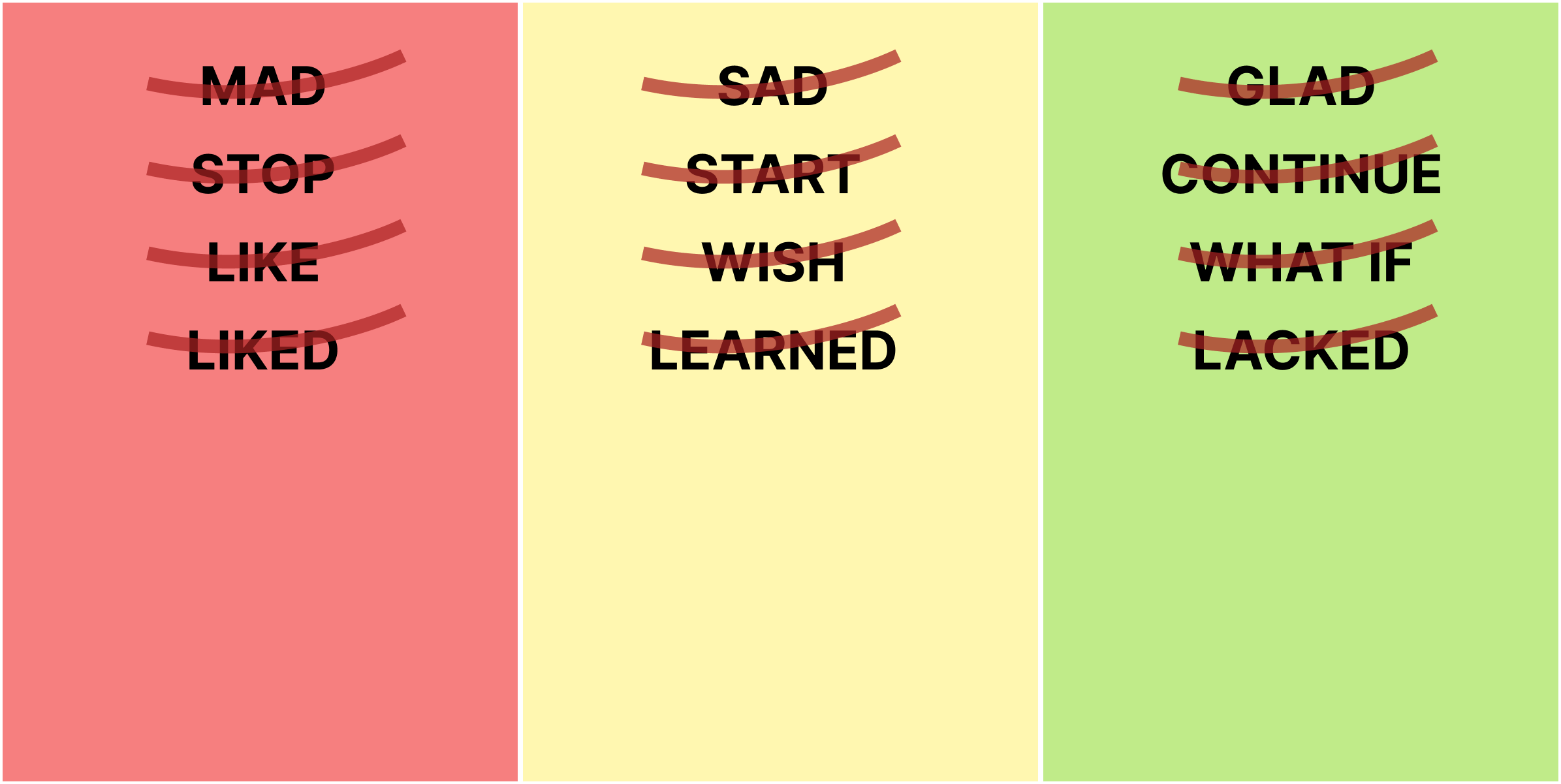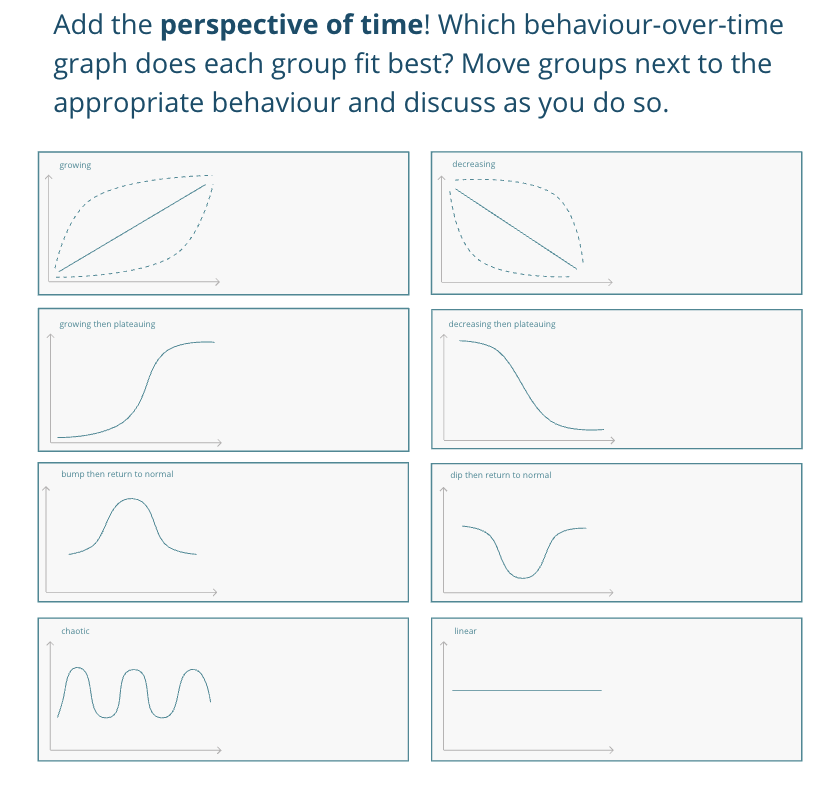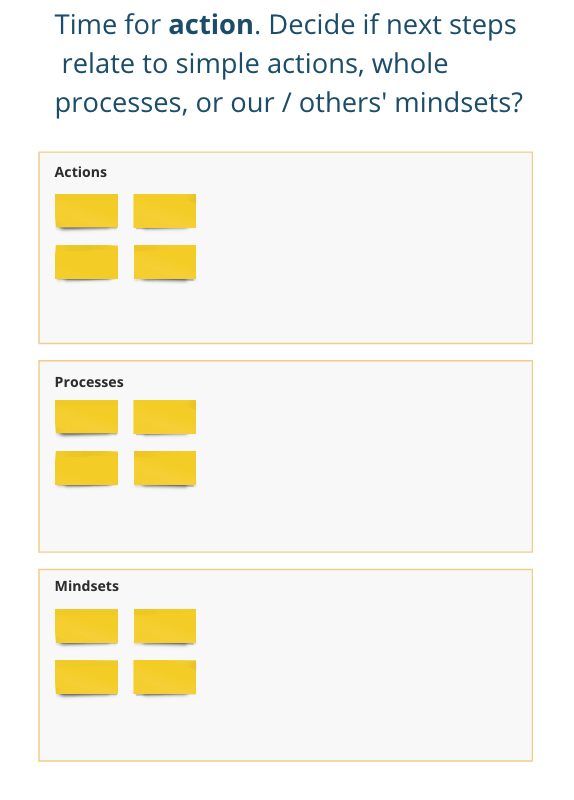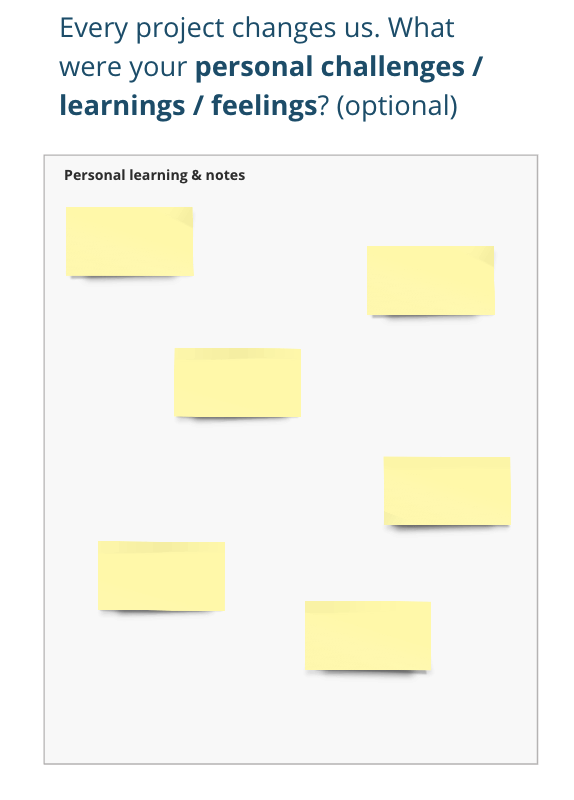A systemic approach to project evaluation.
Best Practice
By Peter Horvath, Strategy & Service Design Lead at Whitespace
Date: 15 January 2024
Change how you run retrospectives and post-mortems with our Systemic Project Evaluation template
TL;DR – We are suggesting a slight tweak to usual project evaluations, by adding 3 crucial factors:
- Behavior-over-time, to facilitate discussion and give a temporal view to events
- Next steps are broken down into actions, processes, and mindsets, to tackle root causes at various levels
- Personal reflection, focusing on individual learning and impressions
Read on to see how to use these 3 factors, and how they contribute to a more robust evaluation with little extra effort. Once you've given it a go a few times, let us know how it went and how we can improve our approach. We'd love to hear from you.
Context
We at Whitespace mostly work on large projects that merit a nimble yet smart review process. Doing any project evaluation is better than doing none. Having said that, we found most project assessment approaches (e.g., mad-sad-glad, stop-start-continue, sailboat, etc.) to be too simplistic. While they seemingly provide key takeaways, these might not be the correct ones.

To correct this, over the years we experimented with adding a Systems Thinking lens to project evaluations. Systems Thinking is about looking at the whole, rather than just parts of a project, enabling new levels of analysis. Through multiple iterations, we arrived at a solution that can be used in sprint retrospectives in agile projects, but also for more robust evaluations at major milestones, or in project post-mortems.
We integrated a systemic approach to project evaluations by adding 3 factors, each of which is described below, including how to use them.
Behavior-over-time
Why it is needed
When you state an observation, it is just a point in time, e.g., “decisions are slow”. It is valid and can be actioned, but it is just part of the truth. It does not explore a temporal dimension, meaning how it behaves over time. Is the speed of decision-making improving (though still bad), consistently low, worsening, etc.?
How we integrated it
We added some sample behavior-over-time graphs. This is a fancy word for generalized visual representations of how things changed with time. We selected 8 typical graph types. There are many more, but we found this to be the sweet spot: it’s granular enough, without getting overly complex. For simplicity, growing and declining graphs combine multiple growth/decline types (logarithmic, linear, exponential) in one view.
How to use it
Once the team lists out and groups observations, these are copied or moved to the graph that best describes them. As they are moved, the person moving them discusses the rationale. Remember these are not definitive decisions, but rather discussion-enablers and discussion-deepeners. They allow us to frame our observations using the perspective of time, thus providing more context, getting more input, and enabling better actions.

Next steps divided into actions, processes, and mindsets
Why it is needed
A single next step in isolation may be useful, but underlying processes may work against it. And even a process change is useless if our mindset is not adjusted along with it.
How we integrated it
We created 3 areas to capture the different types of next steps: action, processes, and mindsets. This ensures that each type gets special attention.
How to use it
After discussing a project observation, the group discusses next steps. If the group deems that a simple action is not enough as a next step, a process tweak is added instead, or in addition. If that is also deemed insufficient, the team captures how they might need to adjust their mindsets.

Personal reflection
Why it is needed
Systems Thinking does not only look at topics in more depth but also the actors in it. People are incredibly complex and unique, so allowing a space for self-reflection is valuable and important.
How we integrated it
A dedicated section has been added, where participants look not at the project through their own lens, but at themselves through the project’s lens.
How to use it
Everyone can add one or more observations about themselves during the project. How did it change or challenge them, what emotions did their involvement create, etc.? This gets personal, so public participation is optional. However, people should be encouraged to at least think about how the project affected them.

Dig deeper
We know this approach is not perfect. However, we wanted to combine depth of analysis with practicality. Anything that goes into more detail than the above was too complex for people to quickly grasp or simply took too long. For example, we purposefully omitted a crucial aspect of Systems Thinking: interconnectedness – we hope this will emerge through the more detailed discussions enabled by the additions mentioned above.
So, if you feel you are ready to take your evaluations to the next level, give our template a go on Miro or Figjam in your next retrospective or post-mortem, and have fun digging deeper!





